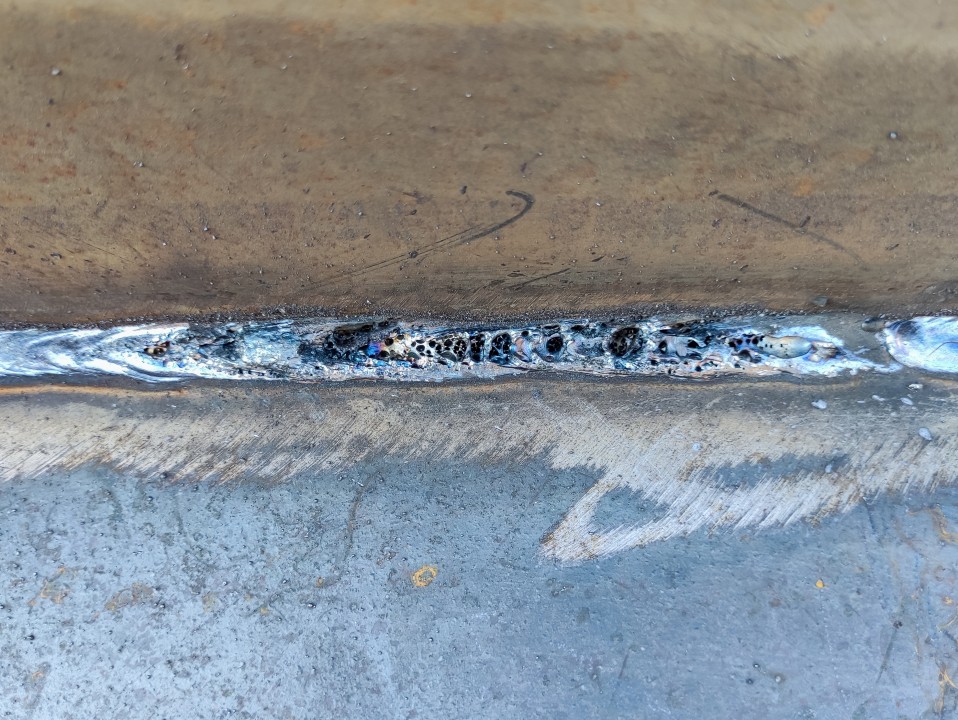Comprehensive Guide: What is Porosity in Welding and How to stop It
The Science Behind Porosity: A Comprehensive Overview for Welders and Fabricators
Recognizing the detailed systems behind porosity in welding is crucial for welders and makers making every effort for flawless workmanship. From the structure of the base products to the details of the welding process itself, a multitude of variables conspire to either worsen or relieve the presence of porosity.
Recognizing Porosity in Welding
FIRST SENTENCE:
Examination of porosity in welding exposes important understandings into the stability and quality of the weld joint. Porosity, defined by the visibility of dental caries or gaps within the weld metal, is a typical issue in welding processes. These gaps, if not effectively resolved, can jeopardize the architectural honesty and mechanical homes of the weld, leading to potential failings in the ended up product.

To identify and evaluate porosity, non-destructive testing methods such as ultrasonic screening or X-ray assessment are frequently used. These strategies permit the recognition of interior flaws without endangering the stability of the weld. By assessing the size, form, and distribution of porosity within a weld, welders can make educated decisions to boost their welding procedures and attain sounder weld joints.

Factors Influencing Porosity Formation
The incident of porosity in welding is affected by a myriad of elements, ranging from gas shielding performance to the details of welding criterion setups. Welding specifications, including voltage, present, travel speed, and electrode kind, likewise influence porosity formation. The welding method employed, such as gas metal arc welding (GMAW) or shielded metal arc welding (SMAW), can affect porosity development due to variants in heat circulation and gas insurance coverage - What is Porosity.
Impacts of Porosity on Weld High Quality
Porosity development considerably compromises the structural integrity and mechanical buildings of welded joints. When porosity is existing in a weld, it creates voids or tooth cavities within the product, minimizing the general toughness of the joint. These spaces work as tension focus factors, making the weld more vulnerable to splitting and failing under lots. The presence of porosity also compromises the weld's resistance to deterioration, as the entraped air or gases within the voids can react with the surrounding atmosphere, leading to deterioration gradually. In addition, porosity can prevent the weld's ability to endure pressure or impact, further endangering the general high quality and dependability of the bonded framework. In essential applications such as aerospace, automotive, or structural building and constructions, where safety and security and resilience are critical, the harmful effects of porosity on weld high quality can have severe effects, highlighting the value of minimizing porosity via proper welding strategies and treatments.
Techniques to Reduce Porosity
To improve the quality of welded joints and make certain architectural integrity, welders and makers employ details techniques targeted at minimizing the formation of spaces and cavities within the material throughout the welding process. content One reliable technique to minimize porosity is to guarantee correct material prep work. This consists of complete cleansing of the base metal to eliminate any type of impurities such as oil, grease, or moisture that might add to porosity development. In addition, making use of the ideal welding specifications, such as the correct voltage, present, and take a trip speed, is important in avoiding porosity. Keeping a consistent arc length and angle during welding additionally helps in reducing the possibility of porosity.

In addition, selecting the right shielding gas and maintaining proper gas flow rates This Site are vital in decreasing porosity. Using the appropriate welding technique, such as back-stepping or employing a weaving motion, can also help disperse warmth equally and reduce the chances of porosity development. Ensuring correct air flow in the welding atmosphere to eliminate any potential resources of contamination is crucial for attaining porosity-free welds. By applying these strategies, welders can effectively minimize porosity and generate premium bonded joints.

Advanced Solutions for Porosity Control
Carrying out cutting-edge innovations and cutting-edge methods plays a crucial function in attaining exceptional control over porosity in welding procedures. In addition, employing sophisticated welding strategies such as pulsed MIG welding or modified environment welding can additionally help reduce porosity concerns.
An additional innovative remedy involves the use of sophisticated welding devices. For example, using tools with integrated features like waveform control and sophisticated source of power can boost weld quality and decrease porosity dangers. The application of automated welding systems with exact control over criteria can dramatically lessen porosity issues.
In addition, including innovative surveillance and examination modern technologies such as real-time X-ray imaging or automated ultrasonic screening can help in finding porosity early in the welding procedure, permitting instant corrective actions. Overall, incorporating these innovative options can greatly improve porosity control and enhance the total high quality of welded components.
Verdict
In final thought, understanding the scientific research behind porosity in welding is vital More hints for welders and fabricators to create top notch welds - What is Porosity. Advanced solutions for porosity control can better enhance the welding procedure and ensure a strong and reliable weld.